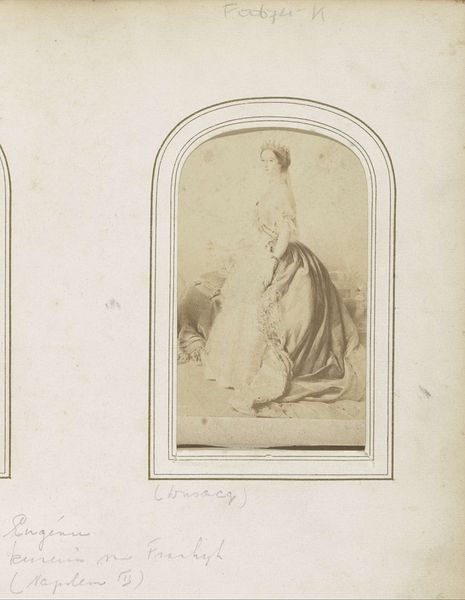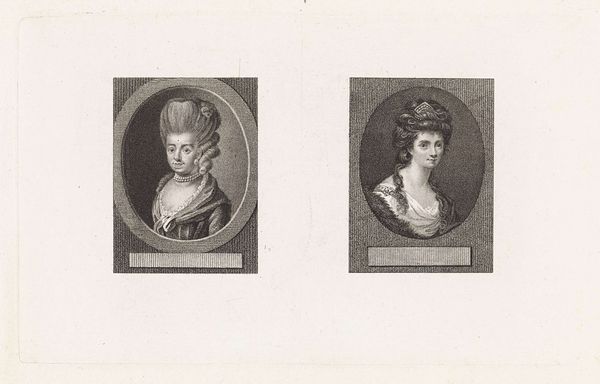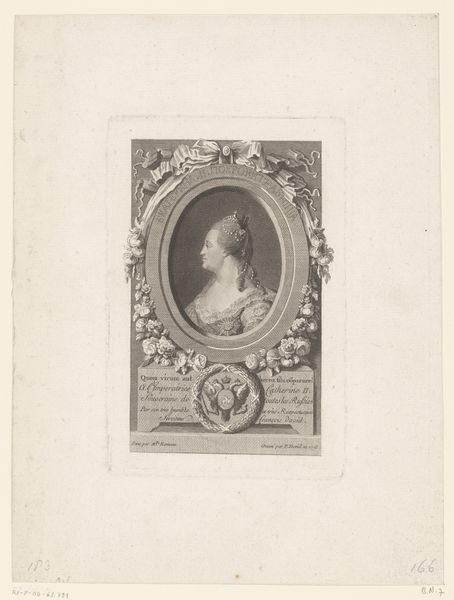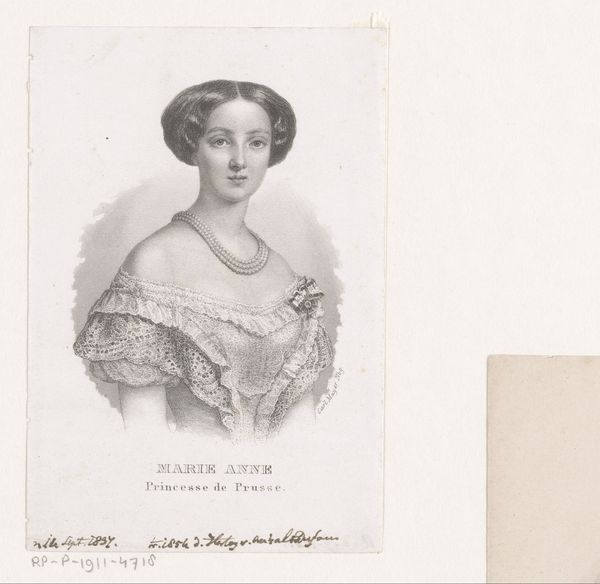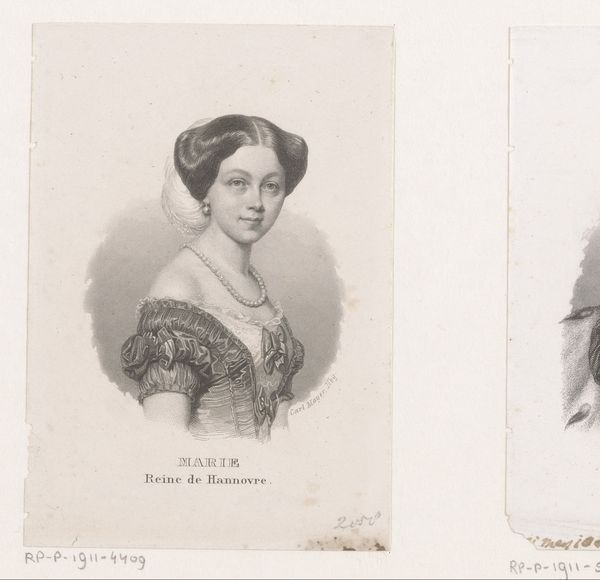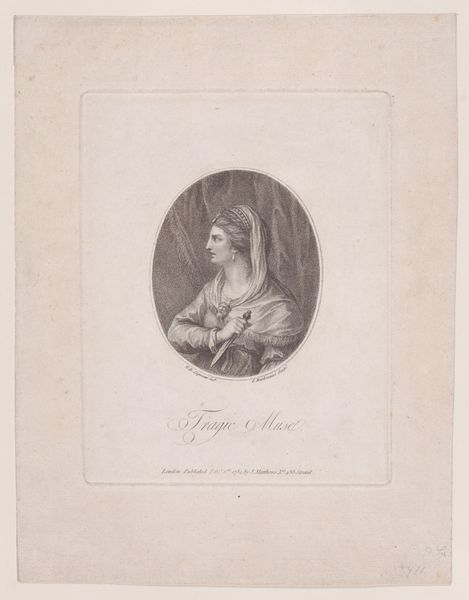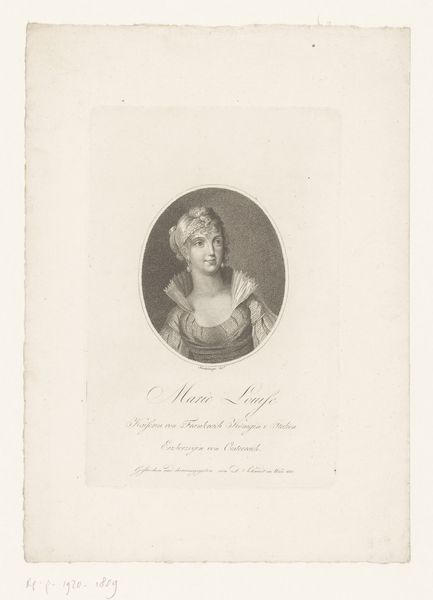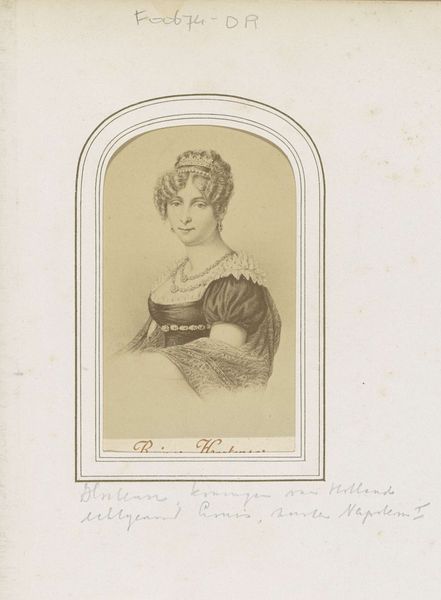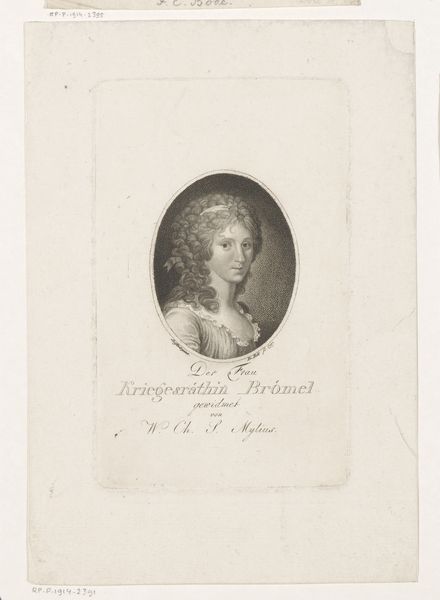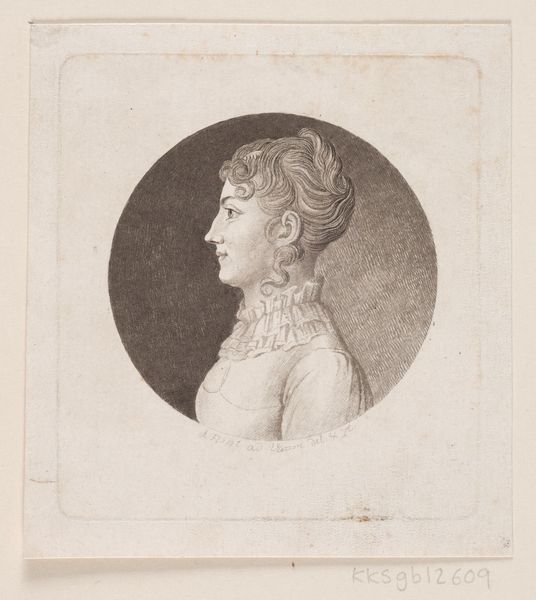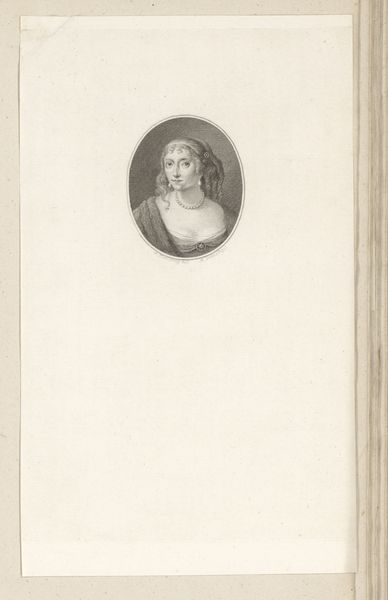
Fotoreproductie van (vermoedelijk) een prent van keizerin Eugénie van Frankrijk, echtgenote van Napoleon III c. 1863 - 1880
0:00
0:00
Dimensions: height 86 mm, width 54 mm, height 103 mm, width 61 mm
Copyright: Rijks Museum: Open Domain
Editor: Here we have a photo reproduction, thought to be a print, depicting Empress Eugénie of France, wife of Napoleon III. It's by Étienne Neurdein, dating roughly from 1863 to 1880, a photomontage that uses the aesthetic language of romanticism. I’m struck by how idealized and timeless it feels, even as the toned paper suggests age. What symbols or cultural memories do you find resonate in this image? Curator: Well, consider the oval frame itself. What does it evoke for you? It’s a symbol, often used for portrait miniatures meant to be held, kept close. What psychological impact might that have when deployed for a *ruler*? Editor: It suggests intimacy, a desire to be closer to the subject. Curator: Precisely. Even reproduced as a photo, this romanticism plays on the enduring power of the monarchy but domesticates it too. Think about the Empress's jewels – the tiara, pearls, the elaborate brooch. It is worth thinking about the cultural significance of jewelry. What do these opulent displays telegraph to the viewer about power, status, and even legitimacy? Editor: It shows how monarchy relied on image and visual language to solidify their positions and signal wealth. How interesting. It is clearly a statement. Curator: Indeed. Consider the visual weight placed upon dynastic symbolism, reflecting aspirations of power and continuity within ruling families across European history. Editor: I didn’t realize how much the framing and the jewels contribute to this construction of power. Thanks for this. Curator: My pleasure. Visual symbolism and material culture always intertwine. Hopefully, this little foray offers a fresh perspective for thinking about images.
Comments
No comments
Be the first to comment and join the conversation on the ultimate creative platform.

